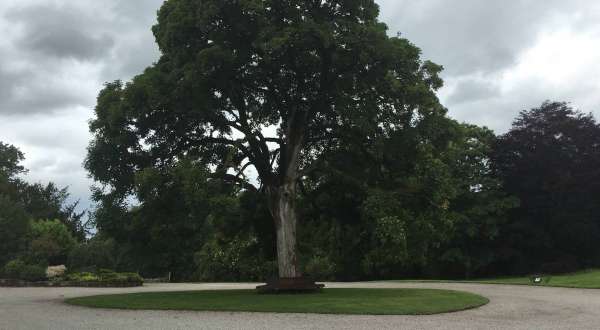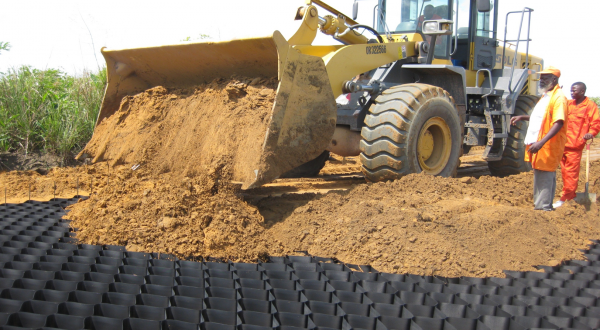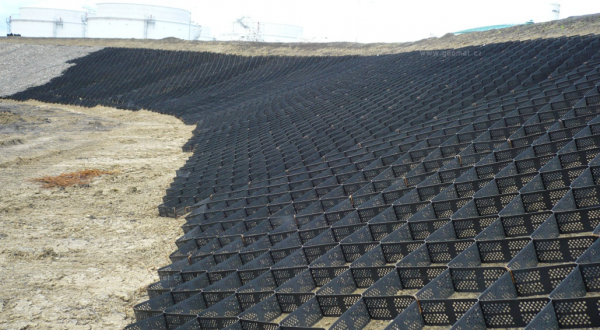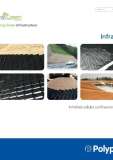In order to stabilise very steep slopes, retaining walls are constructed. Traditional retaining wall structures are constructed of concrete blocks or wooden facias combined with one or more layers of reinforcement (geogrids, metal strips etc.) extending into the soil mass.
This type of wall can be very expensive due to the cost of the facia materials. Instead, using InfraWeb serves as both the facia and the reinforcing element. The cells not only hold the soil in place, they also provide drainage throughout the structure.
An InfraWeb gravity wall is constructed by filling the cells with local, soil and/ or aggregate. An additional benefit is that the outer cells can be vegetated, thus giving the wall a pleasing and environmentally compatible look.
The size of the expanded InfraWeb panels increases the effective thickness of the retaining wall. This in turn enables the construction of walls of considerable height without restroing to the use of additional reinforcing elements.







